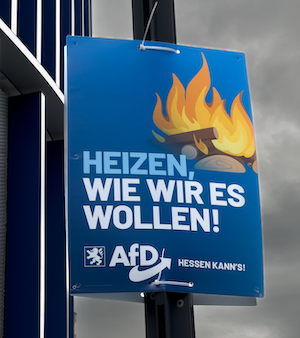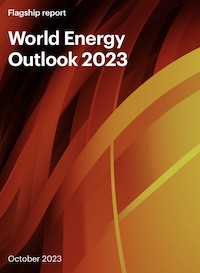Australia’s energy transition
How are we travelling?

The Clean Energy Finance Corporation produced its Annual Report last week, claiming that it has exceeded all four of its quantitative performance targets and both of its qualitative targets. It has committed an additional $1.9 billion to projects, a modest amount in view of the immensity of the task, but it calculates that each dollar of CEFC capital attracts at least another five dollars of private sector capital.
Sophie Vorath of Renew Economy has a summary of the report: Bigger and faster: CEFC says more than $120 billion needed to decarbonise the grid.
The other positive news, reported by the ABC’s Tom Lowrey and Stephen Dziedzic, is that Australia is to re-join the UN’s green climate fund after the Morrison government’s withdrawal. But we shouldn’t get too excited yet. There is no specific figure about how much we are committing. Foreign Minister Penny Wong has simply said Australia will make a “modest” contribution this year.
These, and whatever Albanese brings home from Washington, are useful, but if Australia is to meet its commitment to reduce emissions by 43 percent below 2005 levels by 2030, we need to pick up our pace. That’s a warning from Tim Nelson, Joel Gilmore and Tahlia Nolan of Griffith University, writing in The Conversation: The original and still the best: why it’s time to renew Australia’s renewable energy policy. They explain that while there is ongoing investment in small-scale photovoltaics, investment in large-scale renewables has largely stalled. This is because of a lack of transmission infrastructure, and because in response to Commonwealth indifference to clean energy, state governments fell back on financial incentives that do not necessarily encourage large-scale investment in established wind and solar technologies. The authors suggest other market-based ways, once again using Renewable Energy Targets, to get investment moving again. They see hopeful signs that the Commonwealth is moving in this direction, an optimism also expressed by Anna Skarbek of Climateworks in a Conversation contribution: The road is long and time is short, but Australia’s pace towards net zero is quickening.
Another way to pick up the pace, while relying on market signals, is to re-introduce a carbon price. Ross Garnaut points out that Australia would be raising $70 billion a year from the carbon price if it wasn't dismantled. It’s unfortunate that we have an opposition opposed to markets and so ready to mount a scare campaign against sound economic policy.
Who bears the cost of our energy transition?

The Australia Institute’s 2023 Climate of the Nation Report confirms that Australians are becoming more aware of climate change and that they support strong action to combat climate change. Almost half of respondents (47 percent) think the Commonwealth Government “is not doing enough to prepare for and adapt to the impacts of climate change”, while only 15 percent think “it is doing too much”. The report reveals some predictable partisan differences, but even a third of Coalition supporters believe the government is not doing enough.
The report also reveals denial of climate change (12 percent of Australians believe it is not occurring), a vast over-estimate of the size and importance of the coal and gas industry (we over-estimate its employment by a factor of 69 and its economic contribution by a factor of 5), and a resistance to some measures to combat climate change.
That resistance is often based on a perception that while dealing with climate change will have net benefits for Australia, the costs will be distributed unfairly and that there could be adverse local environment consequences.
Writing in The Conversation Peter Burnett of the ANU describes “rollout rage” – reaction to the local impacts of transmission and generation infrastructure, where local sensitivities are not adequately considered. The ABC’s Jane Norman writes about the conflicts between farmers and energy companies building transmission lines across their paddocks: The clean energy super highway has hit a roadblock. Here's why.
Dan Andrews of ANU and Elyse Dwyer of Macquarie University have a Conversation contribution about what happens to workers when coal-fired plants close. They summarize their research, which finds the consequences for those workers are even worse than for others who lose their jobs. Their skills are highly job-specific, their jobs have been well-paid compared to other jobs on offer, and they are usually older than other displaced workers. Also there are usually regional consequences.
More generally there is the risk of a political backlash if the distribution of costs is not fair. That’s the general point of a Conversation article, The human factor: why Australia’s net zero transition risks failing unless it is fair, by Tracey Dodd of the University of Adelaide and Will Harvey of Melbourne Business School. They note the political impact of protests against green measures in France and the UK.
At very least governments need to acknowledge that the transition to renewable energy will not be easy. Dodd and Harvey write:
Governments can reduce the risk climate change poses to their security and reputation by conducting an honest accounting of how green policies affect people’s wallets. They need to be brave and release information on the less visible aspects of the transition, such as rising unemployment in areas traditionally reliant on coal, and higher energy prices for those who rely on grid energy.

Governments seem to have an innate disposition against such honesty, but honesty should avoid the cost of reactions against broken promises, and it should carry the message that dealing with climate change requires community-wide effort. For many the energy transition will require the pain and effort of adaptive change. If governments suggest that everything will be OK, the backlash will be severe when people find the transition is painful. Also, such frankness can make it easier for governments to collect higher taxes from the beneficiaries of change to ease the burden on the most affected.
The warning by Dodd and Harvey is an apt warning for Australia. While supporters of our traditional centrist parties are easy about climate change, the Australia Institute report, linked above, reveals that more than a third of One Nation supporters believe that the government is doing “too much” to prepare for and adapt to climate impacts. The corflute pictured alongside is a promise from Germany’s far-right Alternative für Deutschland to keep the people of Hessen warm over the coming winter. These far-right movements may not enjoy strong electoral support, but as has happened in Australia, parties that were once centrist and have drifted to the right can do deals with the far right in order to win office.
How to get electric car users to pay for roads
A favourite essay question set by teachers of public finance is “distinguish between a ‘tax’ and a ‘user charge’ set by a government to recoup the cost of a publicly-provided service. Using illustrative examples, define clear criteria to guide policymakers”.
It’s a wretchedly difficult assignment, and no doubt the judges of the High Court grappled with the same problems as public finance students when they declared Victoria’s tax on road use for zero- and low-emission vehicles to be unconstitutional.
It was a dumb tax, characteristic of a bipartisan tendency in Victoria to forget that 20 million of Australia’s 27 million people don’t live in Victoria. That’s why their governments impose things like hook turns, special road rules for days when there are football matches, public transport cards that are unfriendly to visitors, and until last week a road user tax that assumes no Victorian would dare take his or her car out of the state. Also it was unbelievably clunky (requiring photographs of people’s digital dashboards), and took no account of factors such as vehicle weight.
But that wasn’t why the High Court ruled against the tax: there is no constitutional provision protecting us from state government stupidity. The High Court’s ruling was about the question in the student’s essay, as John Quiggin clearly explains in his Conversation contribution: It’s good the High Court overturned Victoria’s questionable EV tax. The sting is that all state user charges may be unconstitutional.
Gasoline and diesel vehicles had one thing going for them: their fuel was easy to tax, and because road wear is related to weight, fuel excise more or less served as a rough user charge. Although excise was never designed as a user charge, it became a convenient way for the Commonwealth to fund roads: until 1992 fuel excise was specifically hypothecated to road funding. Quiggin provides a neat, concise history of excise and where it originally sat in relation to other sources of revenue.
Perhaps if Victoria had not rushed like a bull at a gate into taxing EVs, but had patiently worked out a road use funding scheme to be phased in over time, involving something more intelligent and in keeping with technological developments than dashboard photographs, it would not have been challenged. Other state governments, which were developing their own schemes to charge EVs for road use, must be furious with their Victorian counterparts.
The political dimension of all this is described by Crispin Hull in his post EVs suggest big tax rethink needed. Hull confirms what has often been pointed out in these roundups: for a developed country we don’t collect enough public revenue. If user charges take the place of some taxes there may be some improvement in allocative efficiency, and for people conditioned to think that all taxes are evil, specific road user charges may be more palatable.
That probably means the Commonwealth should collect road user charges on behalf of the states – a de-factoreversion to the pre-1992 system with fuel excise. If this were designed properly it could make for a far better use of our road network with time-of-day charges reflecting congestion costs, abolition of toll roads (which are underused and divert traffic onto suburban streets), and integration of roads with long-distance rail and urban public transport.
Peak fossil fuel
“A legacy of the global energy crisis may be to usher in the beginning of the end of the fossil fuel era: the momentum behind clean energy transitions is now sufficient for global demand for coal, oil and natural gas to all reach a high point before 2030.”

That’s a quote from the International Energy Agency World Energy Outlook 2023. In other words, as noted by the media, the IEA forecasts that the world will reach peak fossil fuel sometime in the next seven years.
Particularly relevant for Australia is that the world may already have reached peak demand for coal, with China now clearly on the path of reducing demand. The peak in demand for oil and gas will come a few years later.
These projections are based on what’s happening in the world, not what the IEA would like to see. As it states “All of those increases are based only on the current policy settings of governments around the world”. That is, a set of policies that are nowhere adequate to limit global warming to 1.5 degrees.
Maybe in time we will all be grateful to Putin, and even Hamas, for bringing on a crisis in oil supply, for they are giving a renewed urgency to the need to invest in renewable energy. Constraining supply as a means of sustaining high prices works in the short term, but it incentivizes the development of alternatives. That’s the general story of commodities.
The ABC’s Daniel Mercer has a short summary of the IEA Report: Accelerating switch to renewables could put fossil fuel peak in sight this decade: International Energy Agency.